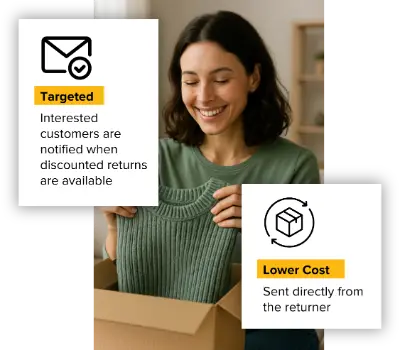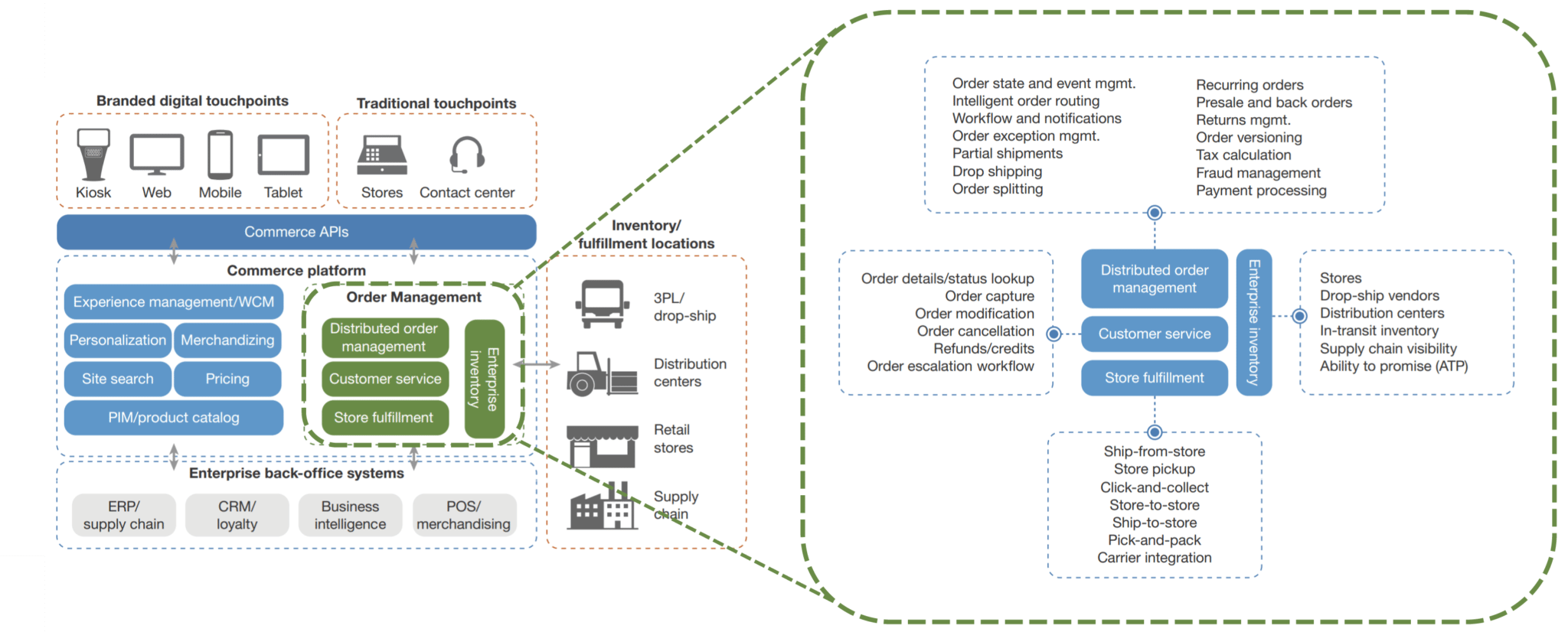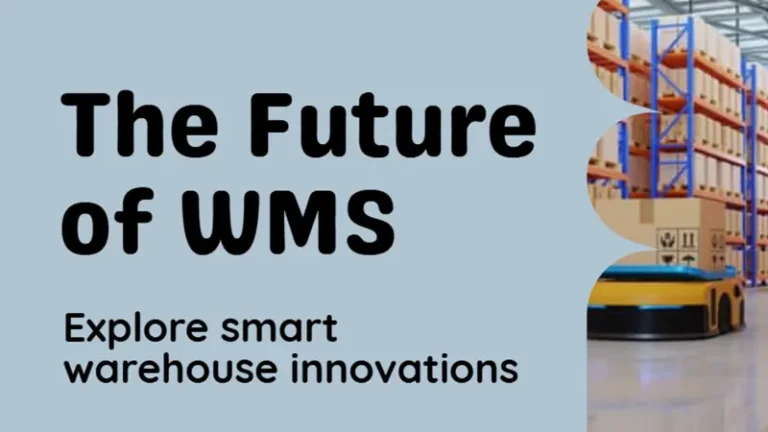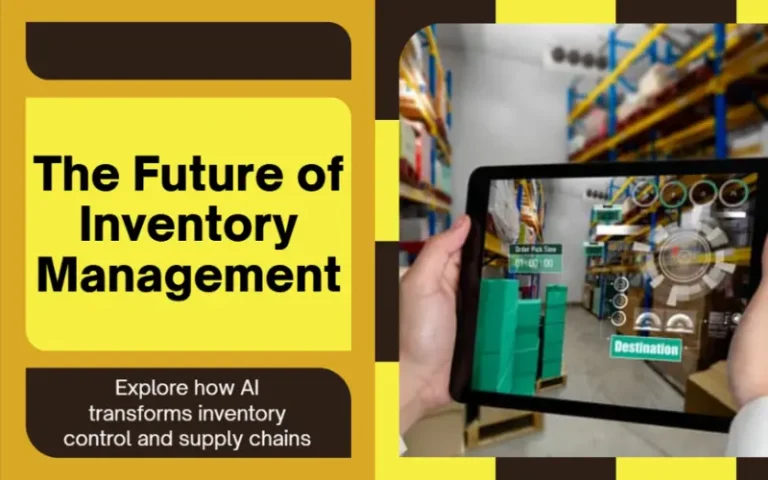The 9 Deadly Sins of a Light Order Management System
In this article
 8 minutes
8 minutes
How can an Order Management System commit deadly transgressions against your business? After all, it’s just software. But, it’s important software. Many retailers learn the hard way that a “light” order management system can be growth’s enemy #1. It’s not that a light OMS does anything bad. It’s just that there are too many important tasks it will refuse to do.
Imagine, for a moment, that you were hiring someone to review all of your online orders as they are received. Their job is to assign orders for fulfillment. You’ve had a chance to watch the two applicants in action.
The first candidate is very fast, probably because he does the exact same thing over and over. He takes the order and forwards it straight to the fulfillment center. Every time. No thinking; just doing. Sometimes, the item is out of stock. But he doesn’t know or care. He just sends the order anyway.
The second seems to be a thinker. And somehow he knows everything about everything. For example:
- He tells the website, “don’t sell that” when he knows an item is out of stock.
- He routes an order to a store near the customer, instead of to a warehouse 1,500 miles away.
- He tells the online customer, “we have that item available at a store just 2 miles from you. Would you rather go pick it up?”
- He even finds out which store has too much stock on hand, and routes orders there for ship-from-store instead of to the warehouse.
Who would you hire? The one who just repeats the same task blindly? Or the one who’s looking out for your customers, delivering faster; and helping your company optimize inventory and minimize shipping costs.
The first candidate is your light OMS.
What crimes against your bottom line does the light OMS commit?
Sub-Optimization, or worse — No Optimization
1. Ineffective Shipping
Shipping an item hundreds of miles instead of hundreds of feet.
If you need something from the hardware store, do you prefer one near your home, or across town? It’s obvious, right? Then why would a retailer ship from it’s distribution center that’s 1,500 miles from the customer, when the item is in stock at a store just 2 miles away?
Good question! Especially since they’d likely save 10% – 30% by shipping from the store. Or even more if the customer comes in to pick it up.
The Light OMS doesn’t know that there’s a store near the customer, or what that store has in stock.
2. Negligent Order Routing
Fulfillment without optimizing inventory and shipping
In that same example, with intelligent order routing, the ecommerce system might even tell the customer, “that item is in stock just 2 miles from you! Would you like to come pick it up?” Shipping costs would vanish, the customer would get instant gratification, and better yet, he or she might even pick up a couple of more items. On average, 20% more items!
Or, what if the warehouse has just 2 units left, but one of the brick-and-mortar stores is overstocked? An intelligent system would route the order to that store. The light OMS? It just keeps doing what its’ doing because that’s all it knows.
3. Senseless Safety Stock
Maintaining too much safety stock, because you don’t know what stock you truly have at all your locations.
Every retailer has to keep some level of safety stock. An Enterprise OMS has organization-wide visibility in its circuitry, with every item across every warehouse, distribution center, Amazon FBA and store. The Light OMS refuses to count intelligently without accounting for flexible fulfillment options. So, instead, you’re overstocked with safety stock in each location.
4. Missing Product Catalog Management
Product Information Spread sheeting instead of Product Information Management
An Enterprise OMS streamlines product catalog management and data syndication across sales channels. It enables you to upload or enter product information once, and it’s available across all of your other systems and sales channels — ERP, POS, Marketplaces and more. The Lite OMS is selfish. It won’t or simply can’t share the information with others. You’re left doing Excel gymnastics, instead of merchandising and promoting.
Playing Dumb
5. 270 degree Black-Out-Blinds
No real-time, enterprise wide view of orders. Or inventory. Or customers. Or products.
The Enterprise OMS is the central nervous system of your commerce operations. A good one is the glue that keeps all of your systems up-to-date with a real-time, enterprise-wide view of all orders, inventory, customers, returns, products and promotions across all sales channels and fulfillment centers. That core function enables a merchant to make smarter decisions, often automatically and in real-time, to deliver faster, more accurately and at a lower cost.
The lite OMS is like a 270-degree black-out-blind. It’s sitting in the perfect place in your technology stack to enlighten your organization; instead it keeps insights from other systems and applications at bay. CSRs waste time logging into multiple systems to handle simple requests; nobody knows product-level inventory levels across the company. You’re very much in the dark.
6. Half-Baked Analytics
Inability to provide the true cross-channel analytics needed to run the business better.
An enterprise OMS has all the information you need to track and benchmark inventory and order-related KPIs across the business. For example:
- What are inventory turns by sales channel. By SKU? By fulfillment center?
- How much have we saved in shipping costs through ship-from-store and intelligent order routing?
- How much upsell did we gain from click & collect customers?
Your OMS lite can’t even scratch the surface on these questions.
- It lacks the information to determine insights at a deeper level.
- You can’t ship from store or route intelligently, so there are little or no savings.
- Even if you could provide “click & collect” services, the POS info needed to determine upsell would be unattainable.
Missing Some Screws
7. Aluminum-Clad Security and Compliance
Less strangest security measures and regulatory compliance capabilities
A Lite OMS may lack the advanced security measures of an enterprise, cloud-based OMS. How secure is the data center? How secure is the software architecture and data governance? Is PCI and SOX compliance a core functionality?
Fall down on compliance or security, and consumer trust is lost. Choosing “light” in this case just may be choosing “lost.”
8. Leaving Money on the Table
Making customers wait to buy from you
Imagine turning away a customer who wants to buy an item that you have in stock and risk losing that customer to a competitor. In fact, they’d like to set up a recurring monthly subscription order. “I’d like to place an order to deliver replenishment office supplies every month.”
Your light OMS is Dr. No. “Nope. Can’t do it. Come back in a month please.” Your light OMS makes customers who want to “subscribe and save” instead “wait and remember.”
An enterprise OMS is delighted to oblige the customer. It will take that order upfront. Every month it will automatically create the order shipment, email the customer and process payments securely – no questions asked.
9. Making One-Size Fit-All
No two enterprise merchants are identical. We all know the benefits of a cloud solution. But, we also know we cannot constrain all merchants to follow the same set of rules in the same order. Or to operate their businesses in the same cookie-cutter way, in today’s age which favors innovation and ingenuity.
The Light OMS only works well for retailers who run their business the way the OMS needs it to. But shouldn’t the software cater to its owner?
Enterprise order management software has flexible and intelligent order routing rules, flexible workflows, and flexibility built in throughout, so retailers can tailor the software to enable their unique competitive differentiation. And, if that’s not enough, the software vendor should be able to customize the software source code and/or interface to meet the unique business needs, for a fee, of course. The light OMS will say “No” to such requests without any consideration.
Summary
Now you’ve seen 9 different ways that a light system can let you down, you must carefully consider which vendors you put on your short list, if you are in the market to buy an order management system. In many cases, IT directors and business leaders aren’t aware how much the role of an Order Management System has evolved in the technology stack, especially when executing on an omnichannel commerce strategy.
Download our whitepaper, 5 Hidden Costs to Avoid When Buying an Order Management System, to learn about how to avoid the hidden costs that can cause painful delays and cost overruns when implementing an enterprise OMS.

Turn Returns Into New Revenue

The Essential Order Management System (OMS) Primer
What is an Order Management System (OMS)?
An order management system (OMS) is the central nervous system of a modern multichannel retail operation. In a nutshell, an OMS conducts the orchestra of systems that process customer orders, assign them to be fulfilled and shipped, track status throughout the process, and synchronize that information across all of the systems and people that need it.
Sounds easy? When retailers sold only through stores, it was a whole lot easier. As sales channels have proliferated, and customer service expectations have increased, the mission of the OMS has expanded.
To understand the mission of a modern OMS, we need to understand today’s retail challenges.
Retailers must excel in multiple sales channels. Or will lose to those who do.
The pressure to sell through multiple channels is immense. From Amazon Marketplace to brick-and-mortar stores, and from catalog orders to eBay, consumers are driving commerce across more channels and platforms than ever. And customers care. Aberdeen Group Inc. claims that companies with the strongest omnichannel customer engagement strategies retain an average of 89% of their customers, as compared to 33% for companies with weak omnichannel strategies. Macy’s reports that omnichannel shoppers are 8X more valuable than those who shop in a single channel.
Customers expect a consistent and coordinated experience across channels
Customers are growing more accustomed to new services enabled by multiple channels:
- I purchased online, and I’d like a telephone rep to change my order.
- I want to make sure the item is in stock before I drive to the store.
- I’m traveling, so I’d like my order delivered after I return, 2 weeks from today.
Traditional order and inventory management software wasn’t designed to work across multiple channels. Customer demands have made change an imperative.
Slash Your Fulfillment Costs by Up to 30%
Cut shipping expenses by 30% and boost profit with Cahoot's AI-optimized fulfillment services and modern tech —no overheads and no humans required!
I'm Interested in Saving Time and MoneyEnter the Modern Order Management System (OMS)
Unlike traditional inventory management software, the modern OMS is designed with the end-customers’ experiences in mind. An OMS generates a holistic, centralized, 360 degree view of customer orders and available inventory across all sales channels (stores, marketplaces, ecommerce storefront, distributors), fulfillment centers and customer service channels.

Source: The Forrester Wave™: Omnichannel Order Management, Q3 2014. Click on image to enlarge
A modern OMS unifies critical data to deliver a consistent omnichannel customer experience.
In the examples below, customer service agents have real-time insight into an order’s status, enabling them to deliver a “wow” experience to customers. Managers can accurately report on current stock, and they can more accurately forecast — they can make data-driven decisions, avoid stockouts, and increase inventory turns.
Customer Example
Buy online & pickup in store (BOPIS)
OMS Role
- Process order, authorize payment, perform fraud checks
- Confirm inventory in store or in warehouse
- Assign store to fulfill order -or- assign warehouse to ship-to-store
- Update customer, inventory, and order records
- Alert customer when order is ready for pickup.
Looking for a New 3PL? Start with this Free RFP Template
Cut weeks off your selection process. Avoid pitfalls. Get the only 3PL RFP checklist built for ecommerce brands, absolutely free.
Get My Free 3PL RFPCustomer Example
Buy online & Seek Customer Support
OMS Role
- Process order, authorize payment, perform fraud checks
- Intelligently route order to warehouse or store closest to the customer, or with the most days of inventory.
- Provide CSRs with real-time view of all orders, customers and inventory
- Enable CSRs to check order status and modify orders
- Update fulfillment center with new instructions
Customer Example
Check Stock Before Driving to Store
OMS Role
- Maintain real-time view of all product inventory across all stores and channels
- Enable online access to SKU-level inventory, by store
Why Do You Need A Modern Order Management System?
Today, customers want to buy products , and return them, anywhere and everywhere. Buy online, return in store. They assume that their online orders will be fulfilled and shipped quickly, and exactly as forecasted. They take for granted that the product they want will be in stock. They’re also sharing their experiences more than ever—on review sites, Amazon, and social media. Every bad customer experience can seriously impact your bottom line. The stakes are higher and higher for every single customer interaction.
In a complex, multi-channel business, each of your products passes through many different teams and locations to get to your customer. A great OMS will save you time and hassle every step of the way:
- Stock products – Centralized inventory management means your business is informed with real-time inventory status, ensuring you keep products in stock for web, phone, and brick-and-mortar sales.
- Process orders – Web, phone, mail-order, or in-person sales are all processed by the same system, so nothing slips through the cracks.
- Route and process – Design business rules for intelligent order routing. You can choose to save on shipping costs by choosing the fulfillment center closest to the consumer. Or you can optimize inventory by shipping from an overstocked store.
- Fulfill – Automated tools generate pick lists, packing slips, and shipping labels with a few clicks, so your fulfillment centers can ship faster.
- Deliver – Advanced shipping integration combines your in-house fulfillment and shipping resources with built-in connections to UPS, USPS, FedEx and more. Eliminate the needless lag of exporting and importing order data.
- Return – Orders update in real-time to one central database, so CSRs can modify any order. You can accept returns through any channel, providing consistently great customer service. Behind the scenes, you’ll keep control of your business with advanced workflows and routing for returns.
Scaling Made Easy: Calis Books’ Fulfillment Journey
Learn how Calis Books expanded nationwide, reduced errors, grew sales while cutting headcount, and saved BIG with Cahoot
See Scale JourneyWhat Are the Essential Features of a World-Class OMS?
Every business is built a bit differently, and a world-class OMS will have additional features and flexibility to meet your precise needs.
- Modern Features – Your OMS must support your omnichannel service aspirations. It’s critical to map your business to OMS features so you can choose an OMS that will meet your needs. Our Order Management System RFP Template can be a great tool to help prioritize and compare features.
- Powerful integration – Your OMS will share information with your ERP, ecommerce storefront (e.g. Shopify, Magento, BigCommerce or others), POS systems, warehouse management system and more. It’s the driving force in unifying your systems. In fact, “underdeveloped APIs” features in our recent white paper as one of the 5 Hidden Costs to Avoid When Buying an Order Management System.
- Cloud-based – Your data and applications are available 24/7 from anywhere, with minimal, if any, tech support. You can learn more about different OMS tech approaches from this whitepaper – Homegrown, On-Premise, or SaaS – Which Order Management System is Best for Me?
- Inventory insights and forecasting – You shouldn’t have to cobble together multiple reports to understand what’s going on with your business. Consistent inventory management across all sales channels ensures that you’re always in stock and able to plan for the future.
- Exceptional customer service – If you ever run into trouble, you need to know that an experienced partner will be there to help.
A modern Order Management System orchestrates your commerce technology and systems to work in concert and deliver stellar omnichannel customer service. Customer satisfaction, share of wallet, and revenue growth all increase while delivering the efficiency and flexibility needed to adapt to ever-evolving commerce channels and customer expectations.

Turn Returns Into New Revenue







